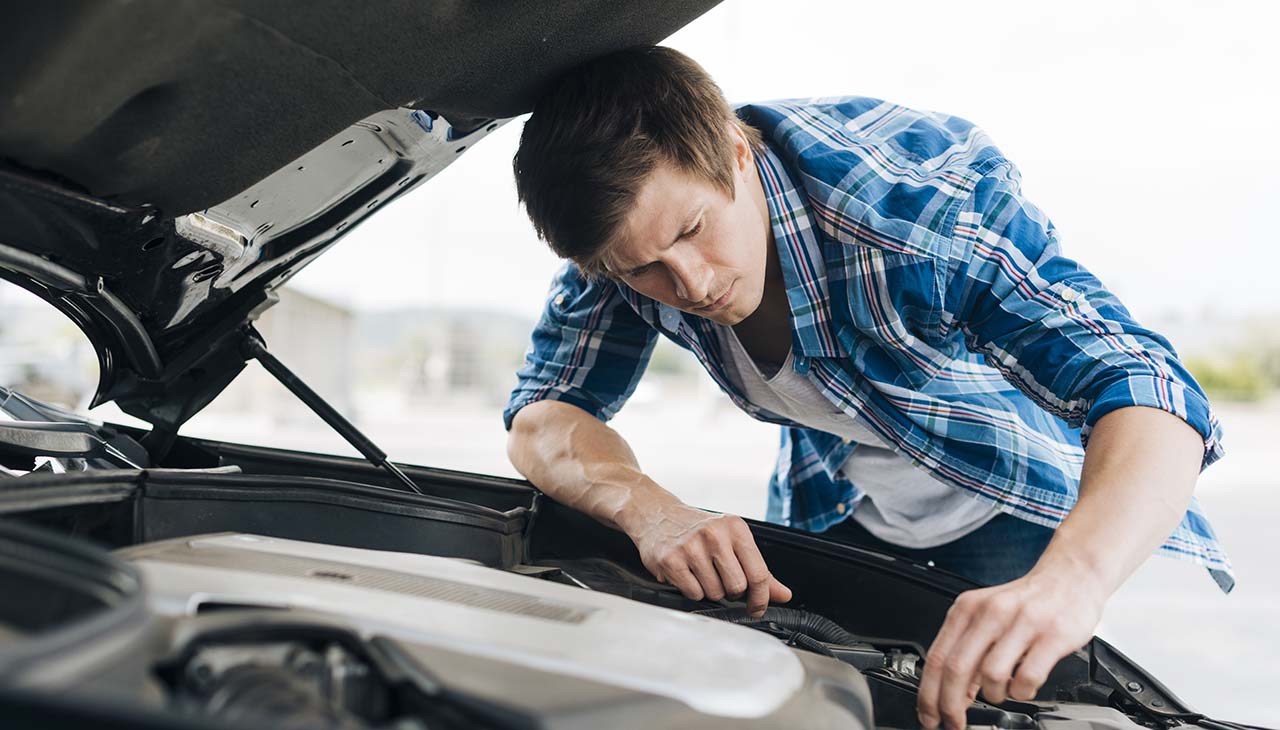Navigating the world of car repairs can often feel daunting and complex, especially for those of us who aren’t mechanically inclined. From unexpected breakdowns to regular maintenance, vehicles demand attention and care to keep them running smoothly. This guide aims to demystify some of the most common car repairs and maintenance tasks that vehicle owners encounter. Whether it’s changing a tire, dealing with a dead battery, or understanding when to replace brake pads, we’ll provide you with essential insights and practical tips to handle these issues confidently and efficiently.
Tire Issues
Causes of Tire Wear and Tear
Tire wear and tear can result from a variety of factors including alignment issues, improper inflation, and driving habits. Over or under-inflating your tires can lead to uneven wear, as can failing to rotate them regularly. Driving on rough roads, hard braking, and other aggressive driving behaviors also contribute to premature tire wear.
How to Check Tire Pressure and Tread Depth
Checking tire pressure is straightforward with the use of a tire pressure gauge. Simply remove the cap from the valve stem, press the gauge firmly onto the stem, and read the pressure. Compare this with the recommended pressure found in your vehicle’s manual or on the inside of the driver’s side door. To check tread depth, use the penny test by inserting a penny into a tread groove with Lincoln’s head facing down. If you can see all of Lincoln’s head, it’s time to replace your tire.
Steps to Change a Flat Tire
- Ensure Safety: Before changing a flat tire, make sure you’re in a safe location away from traffic. Turn on your hazard lights to alert other drivers.
- Prepare Your Tools: Retrieve the spare tire, jack, and lug wrench from your vehicle.
- Loosen the Lug Nuts: Use the lug wrench to loosen the lug nuts slightly while the tire is still on the ground.
- Lift the Vehicle: Place the jack under the vehicle at the designated point and raise the vehicle until the flat tire is off the ground.
- Remove the Lug Nuts and Tire: Remove the lug nuts completely and then pull the tire off the car.
- Mount the Spare Tire: Place the spare tire on the hub, ensuring it’s aligned with the lug bolts. Put the lug nuts back on and tighten them by hand.
- Lower the Vehicle and Tighten Lug Nuts: Use the jack to lower the vehicle so the spare tire is in contact with the ground but the full weight of the car isn’t on the tire. Tighten the lug nuts with the wrench, working in a star pattern to ensure even pressure.
- Fully Lower the Vehicle: Lower the vehicle completely and remove the jack. Give the lug nuts one final tighten to ensure they’re fully secured.
Battery Problems
Signs of a Failing Battery
A battery nearing the end of its life exhibits several telltale signs. Slow engine crank is a common indicator, where the engine takes longer than usual to start. Dimming headlights and electrical issues, such as the radio or air conditioner performing at lower efficiency, can also signal a weakening battery. Additionally, the battery warning light appearing on the dashboard is a direct alert that the battery should be checked.
DIY Battery Testing and Replacement Tips
Testing a car battery can be done with a multimeter:
- Set the Multimeter: Turn your multimeter to the DC voltage scale that is over 12 volts.
- Test the Battery: With the vehicle off, touch the positive (red) lead of the multimeter to the positive terminal of the battery, and the negative (black) lead to the negative terminal. A healthy battery should read around 12.6 volts.
- Check the Charging System: Start the vehicle and check the voltage again. A charging system in good condition should show between 13.7 and 14.7 volts.
If your battery is failing, follow these steps to replace it:
- Safety First: Wear protective gloves and eyewear. Make sure the car is off and the keys are removed.
- Remove the Old Battery: Disconnect the negative (black) terminal first, followed by the positive (red) terminal. Loosen the battery clamp or bracket and carefully lift the battery out of the car.
- Install the New Battery: Place the new battery in the battery compartment. Secure the battery with the clamp or bracket. Connect the positive (red) terminal first, then the negative (black) terminal.
- Check Everything: Once connected, start the car to ensure the new battery is working. Double-check that all connections are secure.
Always dispose of the old battery properly by taking it to a recycling center or auto parts store that accepts used batteries.
Braking System Maintenance
Symptoms of Brake Issues
Identifying brake problems early can prevent costly repairs and ensure your safety on the road. Common symptoms of brake issues include:
- Squealing or Grinding Noises: These sounds may indicate that the brake pads are worn down to their wear indicators, which are designed to alert you when it’s time for a replacement.
- Vibrations or Pulsating: Feeling a vibration or pulsating sensation through the brake pedal or steering wheel when braking often suggests warped rotors.
- Longer Stopping Distances: If your vehicle takes longer to stop than usual, this could be a sign of worn brake pads or low brake fluid levels.
- Brake Warning Light: The appearance of the brake warning light on your dashboard is a direct signal to check your braking system.
Brake Pad Inspection and Replacement Guide
Regular inspection and replacement of brake pads are crucial to the maintenance of your vehicle’s braking system. Here’s a simple guide:
- Inspect Brake Pads: You can often check the thickness of your brake pads without removing the wheel. Look through the wheel spokes and locate the brake pad mounted on the rotor. If the pad is less than ¼ inch thick (about 6 mm), it’s time for a replacement.
- Tools and Supplies: To replace brake pads, you will need a lug wrench, car jack, jack stands, a set of new brake pads, and a C-clamp or brake caliper tool.
- Loosen the Lug Nuts and Jack Up the Car: Loosen the lug nuts slightly before jacking up your car. Use jack stands to securely support the vehicle.
- Remove the Wheels: Take off the wheels to access the brake caliper, which houses the brake pads.
- Remove the Brake Caliper: Unbolt the caliper so you can slide it away from the brake rotor. Hang it securely on the suspension or frame to avoid stressing the brake hose.
- Replace the Brake Pads: Remove the old brake pads, noting their orientation. Install the new pads in the same position. If your car has a wear indicator on the brake pads, ensure it’s positioned so it contacts the rotor’s surface.
- Compress the Caliper Piston: Before reinstalling the caliper over the new pads, the piston must be compressed back into its housing. This can be done with a C-clamp or a caliper tool, making room for the new, thicker pads.
- Reassemble the Braking Components: Reinstall the brake caliper and secure it with bolts. After the caliper is in place, rotate the wheel by hand to ensure free movement of the brake pads.
- Repeat for All Wheels: After finishing one wheel, move on to the next, repeating the process.
- Test Your Brakes: Once all pads are replaced and the wheels are back on, gently press the brake pedal several times to seat the new pads. Start the engine and test the brakes at low speed to ensure proper operation. Remember, new brake pads may require a short period to ‘bed in’ for optimal performance.
Always consult your vehicle’s manual or a professional mechanic if unsure about performing any maintenance tasks. Proper maintenance of your braking system is essential for vehicle safety and performance.

